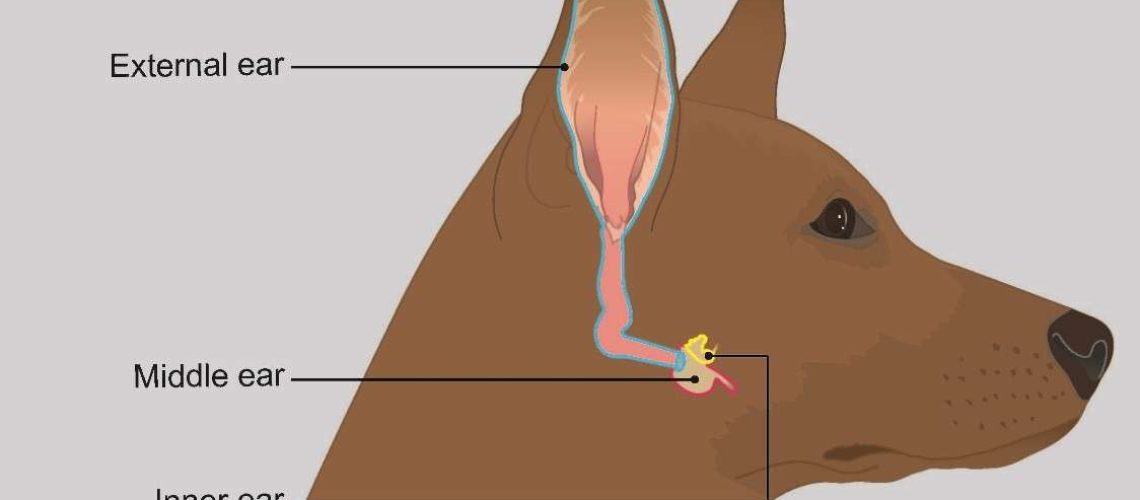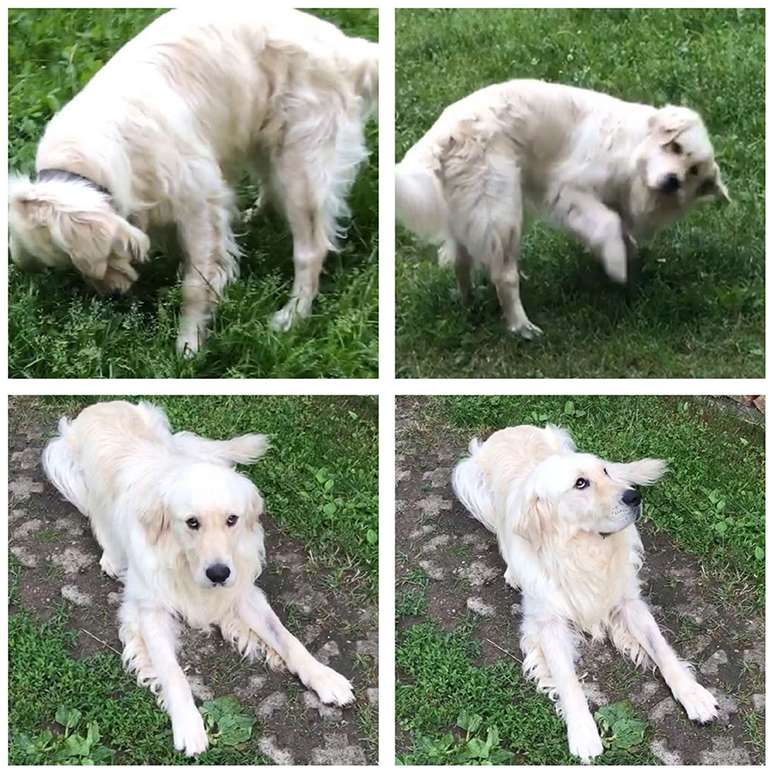Key Takeaways:
- Vestibular disease in dogs is a condition that affects the inner ear and can cause balance problems.
- Common symptoms of vestibular disease include head tilting, loss of coordination, and rapid eye movements.
- Viral infections, ear infections, or certain medications can lead to vestibular disease in dogs.
- Treatment for vestibular disease may include medication to manage symptoms and supportive care to help the dog regain their balance.
- In most cases, dogs with vestibular disease recover within a few weeks with proper treatment and care.
Are you a dog lover who wants to ensure the well-being of your furry friend? Imagine if your loyal companion suddenly started stumbling, tilting their head to one side, or even experiencing episodes of nausea. It can be distressing for both you and your beloved pet. But fear not! By delving into the subject of Vestibular Disease in Dogs, you will gain valuable insights that can help you understand this condition and provide the care your dog needs. Whether you're a concerned pet owner or simply curious about canine health, this topic is essential for anyone who wants to ensure their four-legged friend's happiness and quality of life. So let's dive right in and explore the fascinating world of vestibular disease in dogs together!
What is Vestibular Disease in Dogs and How Does it Affect Them?
Vestibular disease in dogs is a condition that affects their balance and coordination. The vestibular system, located in the inner ear, helps dogs maintain their sense of balance. When this system malfunctions, it can result in symptoms such as dizziness, loss of coordination, head tilting, and difficulty walking.
Imagine trying to walk while feeling constantly dizzy or having trouble keeping your balance. That's how dogs with vestibular disease feel. It can be quite distressing for them, making simple tasks like eating or going for a walk challenging. However, it's important to note that vestibular disease is not typically life-threatening and most dogs recover with proper care.
How Does Vestibular Disease Affect Dogs?
Vestibular disease affects dogs by disrupting their sense of balance and spatial orientation. This can lead to a range of symptoms including:
- Head tilting
- Lack of coordination
- Falling or stumbling
- Nystagmus (involuntary eye movement)
- Nausea or vomiting
- Anxiety or disorientation
These symptoms can vary in severity depending on the underlying cause of the vestibular disease. Some dogs may experience a sudden onset of severe symptoms, while others may have milder symptoms that gradually worsen over time.
Causes of Vestibular Disease in Dogs and Breeds Prone to it
Vestibular disease in dogs can have various causes, ranging from inner ear infections to more serious conditions like brain tumors. Common causes include:
1. Idiopathic Vestibular Disease
Idiopathic vestibular disease, also known as "old dog vestibular syndrome," is the most common cause of vestibular disease in dogs. It occurs spontaneously and its exact cause is unknown. This condition typically affects older dogs and can resolve on its own within a few days to weeks.
2. Ear Infections
Infections in the ear can affect the vestibular system and lead to symptoms of vestibular disease. Bacteria or yeast can invade the inner ear, causing inflammation and disrupting balance. Breeds with long, floppy ears like Cocker Spaniels are more prone to ear infections.
3. Trauma or Injury
A head injury or trauma to the ear can damage the vestibular system, resulting in vestibular disease symptoms. This can occur from accidents, falls, or rough play.
Breeds Prone to Vestibular Disease:
- Cocker Spaniel
- Beagle
- Basset Hound
- German Shepherd
- Doberman Pinscher
- Labrador Retriever
- Poodle
- Dachshund
- Boxer
- Rottweiler
Note that while these breeds may be more prone to developing vestibular disease, it can still affect dogs of any breed or mix.
Recognizing Symptoms of Vestibular Disease in Dogs
What is Vestibular Disease?
Vestibular disease, also known as canine idiopathic vestibular syndrome or "old dog syndrome," is a condition that affects a dog's balance and coordination. It occurs when there is a disruption in the inner ear or the brainstem, which are responsible for maintaining equilibrium. The exact cause of this disease is often unknown, but it can be triggered by various factors such as infections, tumors, or even certain medications.
Common Symptoms to Look Out For
When a dog has vestibular disease, they may exhibit several noticeable symptoms. One of the most apparent signs is a sudden loss of balance and coordination. You may notice your dog stumbling or falling over, unable to walk straight. They may also tilt their head to one side and have difficulty keeping their eyes focused. Other symptoms include rapid eye movements (nystagmus), nausea or vomiting, and a general sense of disorientation.
Seeking Veterinary Care
If you observe any of these symptoms in your furry friend, it's crucial to seek veterinary care immediately. While vestibular disease can be distressing for both you and your pet, it is essential to remember that most cases resolve on their own with time and supportive care. However, it's always best to consult with a veterinarian who can accurately diagnose the condition and rule out any other underlying health issues.
Treatment Options for Vestibular Disease in Dogs
Once diagnosed with vestibular disease, treatment options will depend on the severity of the symptoms and the underlying cause if identified. In mild cases where no specific cause is found, supportive care at home may be sufficient. This includes providing a quiet and comfortable environment for your dog to rest and recover.
In more severe cases or if an underlying cause is identified, your veterinarian may recommend additional treatments. Medications such as anti-nausea drugs or antibiotics may be prescribed to alleviate symptoms and treat any infections. Physical therapy exercises can also help improve balance and coordination over time.
It's important to note that while treatment can help manage the symptoms, it may take several weeks or even months for a dog to fully recover from vestibular disease. Patience and consistent care are key during this time, ensuring your furry companion feels safe and supported throughout their healing journey.
Preventing Vestibular Disease in Dogs: Lifestyle Changes and Risk Reduction
While vestibular disease cannot always be prevented, there are steps you can take to reduce the risk of your dog developing this condition. Maintaining good overall health through regular veterinary check-ups, vaccinations, and a balanced diet is essential.
Additionally, avoiding exposure to toxins or hazardous substances can help minimize the chances of vestibular disease. Keep harmful chemicals out of reach, ensure your dog's environment is free from potential hazards such as sharp objects or slippery surfaces, and provide regular exercise to keep their muscles strong.
If your dog has a history of ear infections or other conditions that may increase their susceptibility to vestibular disease, discuss preventive measures with your veterinarian. They may recommend routine ear cleanings or specific medications to minimize the risk.
Possible Long-Term Effects and Complications of Vestibular Disease in Dogs
In most cases, dogs with vestibular disease recover fully without any long-term effects. However, in some instances where an underlying cause remains unresolved or if the disease is severe, there may be complications that impact a dog's quality of life.
One possible long-term effect is residual head tilt. Even after recovering from the initial episode of vestibular disease, some dogs may continue to have a slight tilt in their head due to permanent damage in the inner ear or brainstem. While this may not significantly affect their daily activities, it can be a visible reminder of their past condition.
Another potential complication is the development of anxiety or fearfulness. Dogs who have experienced vestibular disease may become more cautious and anxious about their surroundings, especially if they had a severe episode that caused them distress. Providing a calm and supportive environment can help alleviate these anxieties and promote emotional well-being.
Overall, while vestibular disease can be a challenging experience for both dogs and their owners, most cases resolve with time and proper care. By recognizing the symptoms, seeking veterinary attention promptly, and implementing preventive measures, you can help your furry companion navigate through this temporary imbalance and regain their balance in life.
Treatment Options for Vestibular Disease in Dogs
Medical Management
When it comes to treating vestibular disease in dogs, medical management plays a crucial role. Veterinarians may prescribe medications such as anti-inflammatory drugs or antibiotics to address the underlying cause of the disease. These medications help reduce inflammation and control infections that could be contributing to the symptoms. Additionally, anti-nausea medications can be prescribed to alleviate vomiting and improve the dog's overall comfort.
Physical Therapy
Physical therapy is another effective treatment option for dogs with vestibular disease. It involves exercises and techniques designed to improve balance, coordination, and strength. A professional canine physical therapist can guide the dog through various exercises like walking on uneven surfaces or performing specific head movements. These exercises help stimulate the vestibular system and promote its recovery over time.
Home Care Tips:
- Provide a safe environment: Remove any obstacles or hazards that may cause your dog to trip or fall.
- Supportive bedding: Use comfortable bedding that provides extra cushioning for your dog's head and body.
- Gentle handling: Be patient and gentle when assisting your dog with movements or during bathroom breaks.
- Regular exercise: Engage your dog in light exercise routines recommended by your veterinarian to aid in their recovery.
Preventing Vestibular Disease in Dogs: Lifestyle Changes and Risk Reduction
Dietary Considerations
Maintaining a balanced diet is essential for preventing vestibular disease in dogs. Providing a high-quality commercial dog food that meets their nutritional needs can help support their overall health, including their vestibular system. Avoid feeding them table scraps or foods high in fat, as these can contribute to obesity, which increases the risk of developing vestibular issues.
Regular Veterinary Check-ups
Regular veterinary check-ups are crucial for identifying and addressing any potential health issues before they progress into vestibular disease. Your veterinarian can perform routine examinations, monitor your dog's weight, and conduct necessary tests to ensure their overall well-being. Early detection of underlying conditions can help prevent the onset of vestibular disease.
Additional Tips:
- Maintain a consistent exercise routine: Regular physical activity helps keep your dog in good shape and promotes overall health.
- Provide mental stimulation: Engage your dog in interactive games or puzzle toys to keep their mind active and reduce stress.
- Keep the environment clean: Regularly clean your dog's living area to minimize exposure to allergens or irritants that could affect their vestibular system.
Possible Long-Term Effects and Complications of Vestibular Disease in Dogs
Balance Issues
One of the long-term effects of vestibular disease in dogs is persistent balance problems. Even after recovering from an episode, some dogs may experience residual balance issues. This can make it challenging for them to walk or perform daily activities without assistance. Physical therapy exercises tailored to improving balance can help manage these long-term effects.
Hearing Loss
In certain cases, vestibular disease can lead to permanent hearing loss in dogs. The inner ear houses both the vestibular system responsible for balance and the auditory system responsible for hearing. Damage to the inner ear during a severe bout of vestibular disease can result in irreversible hearing loss.
Tips for Managing Long-Term Effects:
- Assistive devices: Consider using harnesses or slings to provide support during walks or when navigating stairs.
- Visual cues: Use visual cues such as brightly colored markers on steps or furniture edges to help your dog navigate their surroundings more easily.
- Regular veterinary follow-ups: Schedule regular check-ups with your veterinarian to monitor any changes in your dog's condition and adjust their treatment plan accordingly.
Remember, early intervention and proper management can greatly improve the quality of life for dogs affected by vestibular disease.
In conclusion, vestibular disease in dogs is a condition that affects their balance and coordination. It can cause symptoms like dizziness, head tilting, and difficulty walking. With proper care and treatment from a veterinarian, dogs with vestibular disease can improve and lead happy lives.
How long can dogs live with vestibular disease?
Frequently, dogs demonstrate signs of improvement from an episode of vestibular disease within 72 hours, and their recovery should occur within one to two weeks. Even after recovery, most dogs with vestibular disease can live a long life despite some ongoing symptoms like a tilted head and nausea.
What triggers vestibular disease in dogs?
Vestibular disease can be caused by various factors such as infections in the middle or inner ear, the use of ear-toxic drugs, injuries or trauma, presence of tumors, and hypothyroidism. If no specific cause is identified, it is referred to as idiopathic vestibular syndrome.
How do you treat vestibular disease in dogs?
Treatment for central vestibular disease typically includes the use of antibiotics, corticosteroids, antifungal medication, or antiepileptic drugs. The appropriate treatment for your pet will depend on the underlying cause of the disease.
What happens to a dog with vestibular disease?
Animals with vestibular disease exhibit unsteady walking patterns, resembling that of a drunk individual, as they tend to sidestep, lean, or stumble towards one side. The condition is referred to as vestibular disease due to the fact that the receptors responsible for detecting movement and head positioning are situated within the vestibule of the inner ear.
When should I euthanize my dog with vestibular disease?
There is no need to euthanize a pet dog with vestibular disease right away, unless the dog is already in a deteriorated condition and has lost a significant amount of its health and quality of life prior to this sudden episode.
Can a 14 year old dog recover from vestibular disease?
The majority of dogs with idiopathic vestibular disease make a complete recovery. Some may have minor and ongoing neurological issues, such as a head tilt or slight instability when shaking their heads, but these issues rarely have a significant impact on their overall quality of life.

















